
Currant U-Pick Orchards in Vermont in 2024, by county
Below are the U-Pick orchards and farms for currants that we know of in this area.
Not all areas of a state have currants orchards that are open to the public. If you know of any others, please tell us using the add a farm form!
Remember to always check with the farm's own website or Facebook page before you go - or call or email them if they don't have a website or Facebook page. Conditions at the farms and crops can change literally overnight, so if you want to avoid a wasted trip out there - check with the farm directly before you go! If I cannot reach them, I DON'T GO!
PLEASE report closed farms, broken links and incorrect info using the "Report Corrections" form below.
Addison County
- The Last Resort - CERTIFIED ORGANIC, red and black currants, raspberries, mulberries, and blueberries
2246 Tyler Bridge Road, Monkton, VT 05443. Phone: 802-453-2847. Open: June-July. Directions: Tyler Bridge Road, Monkton. \(Certified organic strawberries, raspberries, vegetables, pumpkins, garlic, currants\) . Stop by the . Click here for a map and directions. Call ahead to plan a picking dateTyler Bridge Road, Monkton. (Certified organic strawberries, raspberries, vegetables, pumpkins, garlic, currants) . Stop by the farm stand open year round, or find Last Resort products at area co-ops, small groceries, restaurants, and farmers' markets. Pick-your-own red and black currants, raspberries, mulberries, and blueberries by appointment only. Also: Fresh-picked Zucchini, eggplants, chard, beet greens and baby beets, green onions, basil, fresh garlic, garlic, snap and shelling peas, gooseberries, mulberries, currants, raspberries in the cooler. Blueberries too!. Also, non-organic maple syrup always available. (UPDATED: July 20, 2020 JBS)
Caledonia County
- Lanzer's Fruit Farm - Uses natural growing practices, currants (red and black),
273 Porter Brook Rd, East Hardwick, VT 05836. Phone: 802-441-5550. Email: claire@lanzersfruitfarm.com. Open: Monday - Sunday 10am to 6pm, July 15th - August 14th. Directions: . Click here for a map and directions. Payment: Cash, Check. . Alternate Phone: 802-472-5720 We use natural practices, but are not yet certified Organic
Chittenden County
- Last Resort Farm - CERTIFIED ORGANIC, Strawberry, blueberry, currants
2246 Tyler Bridge Road, Bristol, , VT 05443. Phone: (802) 453-2847. Open: By appointment, call; From approximately June 15 to July 6, the strawberry field is open daily for picking from 8 am to 5 pm. Click here for a map and directions. Payment: Cash, Check. See their website for directionsORGANIC! Pick-your-own red and black currants, raspberries, mulberries, and blueberries by appointment only. One of the first Vermont farms to offer organic pick-your-own strawberries, The Last Resort is a great place to pick berries. Unique to the farm is a special section of Toddler Rows where children can roam while accompanied by an adult, and learn the joys of picking, free from strict rules about where to step.
Comments from a visitor on July 10, 2011: "Very nice folks, very peaceful, kids strawberry picking area where we don't have to be concerned about stepping in the wrong place" - Pringle Farm - currants (red and black),
2577 Lake Road, Charlotte, VT 05445. Phone: 802 777-8757. Email: Mrblueearth@aol.com. Open: Monday through Friday by appointment, all day Saturday and Sunday. Directions: 13 mile north of Ferry Road and Lake Road. . Click here for a map and directions. Payment: Cash, only. . Alternate Phone: 802 362-4134Fax: 802 419-3843 1/3 mile north of Ferry Road and Lake RoadBlack Currants, July 21 through July 27$3 a quart or we will split yer pickins.
Lamoille County
- Two Sisters Organic Farm - Certified Organic, blueberries, currants (red), currants (black), picnic area you may bring your own food
1375 Plot Road, Johnson, VT 05656. Phone: (802) 242-4588. Email: twosistersorganicfarm@gmail.com. Open: hours, days and dates. Directions: From MorrisvilleStowe, West on Route 15, entering Johnson, pass the Woolen Mills on right, turn next right \(Clay Hill\), continue up the hill past the University 1 mile. Take the 2nd left onto Plot Road which turns to dirt after 12 mile. Continue another 12 mile, go through the intersection of Footbrook road, up the hill and as it levels out we are just past the red farmhouse on the left. You will see a long brown barn and Farm sign and lots of blueberries. We are certified organic for all . Click here for a map and directions. Payment: Cash, Check.
Two Sisters Organic Farm Facebook page. Season normally runs from mid - July through late August; in season Wednesday to Monday from 9 am to 6 pm; Closed Tuesdays; See website (scroll to bottom of home page) or call for exact opening/closing of season/hours. Click here for current open From Morrisville/Stowe, West on Route 15, entering Johnson, pass the Woolen Mills on right, turn next right (Clay Hill), continue up the hill past the University 1 mile. Take the 2nd left onto Plot Road which turns to dirt after 1/2 mile. Continue another 1/2 mile, go through the intersection of Footbrook road, up the hill and as it levels out we are just past the red farmhouse on the left. You will see a long brown barn and Farm sign and lots of blueberries. We are certified organic for all crops! Our berries are multi-year "Best in Class" winning at the county fair and we offer great views of the mountains and valley in a peaceful setting. We provide picking baskets with belts and carry home bags. Our motto is "You pick em, you weigh em, you pay em". We have a picnic table and shaded areas for hanging out or feel free to bring food and enjoy the hilltop breezes and views. (UPDATED: August 15, 2019)
Currants
Currants Picking Tips, Recipes and Information
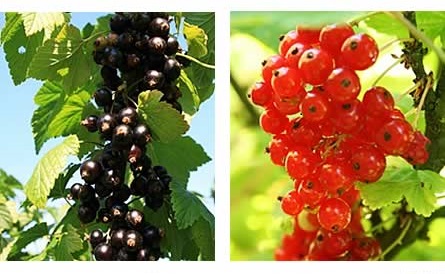
If you are about to pick currants either directly from a bush or from a local orchard or market, here's what you need to know to pick the best currants.
Currants are a fairly early crop, flowering soon after the last frosts in April and May, setting fruit in June, usually at the same time as strawberries in most areas (but check your area's harvest calendar and call the farm or orchard you are planning to go to a few weeks ahead).
Currants picking tips
When:
- Currants are typically ripe and ready for picking in the summer months, usually from late June to early August, depending on your location and the specific variety.
- Early morning is often the best time to pick currants. The berries are less likely to be stressed by the heat of the day, and they'll be at their juiciest.
- Try to avoid picking currants when they're wet from rain or dew. Moisture can cause the berries to deteriorate quickly and become moldy.
- Currant bushes can produce berries over a period of a few weeks. Check the bushes every couple of days to pick ripe berries and prevent overripening.
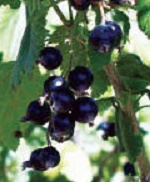
How:
- Make sure your hands are clean before you start picking to avoid transferring dirt or contaminants to the berries.
- Look for currant clusters that have plump, fully-colored berries. They should be slightly translucent and have a vibrant hue. Avoid berries that are underripe or overly soft.
- Hold the currant cluster gently but firmly, and use your other hand to pick the berries. Currants are delicate, so avoid pulling or tugging forcefully, as this can damage the branches.
- Proper Technique: Pinch the stem between your thumb and forefinger, then roll your fingers to detach the berries. This helps to prevent damaging the stem or the fruit.
- Leave some space between your fingers to prevent squishing the berries while you pick. Currants are small and can be easily damaged if you're not careful.
- Ripe currants should come off the stem with minimal effort. If you find yourself having to tug hard to detach a berry, it might not be fully ripe yet.
- While picking, keep an eye out for any signs of pests like aphids or caterpillars. Remove any infested berries to prevent spreading the issue.
- Use shallow containers, baskets, or colanders to collect the berries. This helps prevent crushing them under their own weight.
- Don't overfill your containers or try to pack the currants down.
- Respect the Plant. Be mindful not to damage the plant while you're picking. Avoid breaking branches or causing unnecessary stress to the bush.
After picking: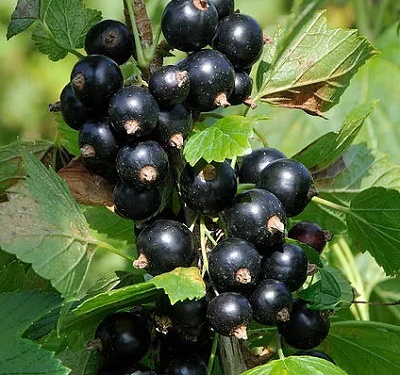
- After picking, gently transfer the currants into shallow containers or bags. Store them in the refrigerator as soon as possible to maintain freshness. Currants can also be frozen for longer storage.
- Avoid placing the picked currants in the sunshine any longer than necessary. It is better to put them in the shade of a tree or shed than in the car trunk or on the car seat.
- Cool them as soon as possible after picking. Currants may be kept fresh in the refrigerator for two or three days, depending upon the initial quality of the berry.
- Currants have a short shelf life compared to some other fruits, so plan to use or preserve them within a few days of picking. Remember that the specific techniques and tips may vary slightly based on the type of currants you are picking (red, black, or white currants), so it's a good idea to familiarize yourself with the characteristics of the particular variety you're working with.
Before you leave to go to the farm:
- Always call before you go to the farm - Currants are affected by weather (especially rain and cooler temperatures) more than most crops. And when they are in season, a large turnout can pick a field clean before noon, so CALL first! Always call before you go to the farm - Currants are affected by weather (especially rain and cooler temperatures) more than most crops. And when they are in season, a large turnout can pick a field clean before noon, so CALL first!
-
 Leave
early. On weekends, then fields may be picked clean by NOON!
Leave
early. On weekends, then fields may be picked clean by NOON! -
Most growers furnish picking containers designed for Currants, but they
may charge you for them; be sure to call before you go to see if you need to
bring
containers.
If you use your own containers, remember that heaping Currants more than 3 inches deep will smush the lower currants. Plastic dishpans, metal oven pans with 3 inch tall sides and large pots make good containers. I like the Glad storage containers like the one at right. - Bring something to drink and a few snacks; you'd be surprised how you can work up a thirst and appetite! And don't forget hats and sunscreen for the sun. Bugs usually aren't a problem, but some deet might be good to bring along if it has been rainy.
When you get home
- DON'T wash the currants until you are ready to use them. Washing makes them more prone to spoiling.
- Currants are more perishable than blueberries or strawberries, so make a point of refrigerating them as immediately as possible after purchase. Temperatures between 34 F and 38 F are best, but, be careful not to freeze currants! (Fresh currants are highly prone to freeze damage).
- Pour them out into shallow pans and remove any mushed, soft or rotting currants
- Even under ideal conditions currants will only keep for a few days in a refrigerator, so for best flavor and texture, consume or freeze them as soon as possible after purchase.
- See my How to freeze berries page. (Unless you're going to make jam right away)
- Now, get ready to make Currants jam - It is VERY easy - especially with our free Currants preserves instructions - illustrated and easy or cherry pie filling
Currants Recipes, Canning, Jam, Jelly, and related resources
- Currants jelly
- Currant jelly (unthickened)
- Currants festivals
- Currant facts - useful, interesting and fun facts
Currants varieties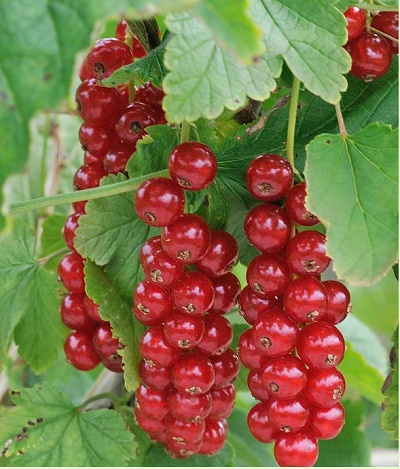
Here is a description of each type of currant
Red Currants:
- Small, round berries that are translucent and bright red when ripe.
- Tangy and slightly tart flavor, often used in jams, jellies, sauces, and desserts.
- Typically grow in clusters on deciduous shrubs.
- Rich in vitamin C and antioxidants.
- Commonly used in both sweet and savory dishes due to their tartness.
- Suitable for fresh consumption when fully ripe, but their intense flavor may be an acquired taste for some.
Black Currants:
-
Small, round berries that are dark purple to black when ripe.

- Distinctly strong, sweet-tart flavor with earthy undertones.
- Often used in jams, juices, syrups, desserts, and even alcoholic beverages.
- Grow in clusters on woody shrubs with distinctive five-lobed leaves.
- High in vitamin C, antioxidants, and other beneficial compounds.
- Considered to have potential health benefits due to their nutritional profile.
- The strong flavor can be polarizing, and some people might find it overpowering.
White Currants:
-
Similar in size and shape to red currants but are translucent to pale yellow or pink when ripe.
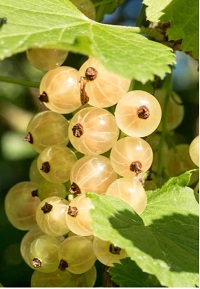
- Delicate and sweet with a mild, fruity flavor.
- Used in jams, jellies, preserves, and for fresh consumption, especially as a garnish.
- Grow in clusters on shrubs and are less common than red or black currants.
- Sometimes referred to as "albino currants" due to their light color.
- Lower in acidity compared to red and black currants, making them a milder option for those who prefer less tart flavors.
- Because of their light color, they can add an elegant touch to dishes and presentations.
Other Local Farm Products (Honey, Horses, Milk, Meat, Eggs, Etc.)
(NOT pick-your-own, unless they are also listed above)
- Farm markets and roadside stands
- Local Honey Finder
- Local Meat, Milk and Eggs
- Venues: Farms, Wineries, Orchards for your event, wedding or party
- Easter egg hunts
- Children"s consignment sales
- Fruit and vegetable festivals
- Winery tours and wine tastings
- Horse rides, stables, lessons, trails
- Maple Syrup farms and sugarworks
- Bed & Breakfasts on Farms, Wineries, Ranches and Orchards
- Pumpkin patches
- Corn mazes
- Zombie Paintball venues
- Christmas Tree Farms & lots
- Environmental resources
- Consumer fraud information
- Wholesale food sources
- Resources for Farmers
Looking for canning equipment and supplies?
Water bath canner with a jar rack
Pressure canners for gas, electric and induction stoves: Presto 23Qt or T-fal 22Qt
Canning scoop (this one is PERFECT)
Ball Blue book (most recent version)
Jars: 8oz canning jars for jams
Find Other types of farms:
Farm markets and roadside stands
Road trips and camping resources
Local Honey, apiaries, beekeepers
Consumer fraud and scams information
Home canning supplies at the best prices on the internet!
Maple Syrup Farms, sugarworks, maple syrup festivals
Environmental information and resources
Farms For Your Event for birthday parties, weddings, receptions, business meetings, retreats, etc.
Festivals - local fruit and vegetable festivals
Get the
most recent version of
the Ball Blue Book
With this Presto 23 quart pressure canner and pressure cooker, you can "can" everything, fruits, vegetables, jams, jellies, salsa, applesauce, pickles, even meats, soups, stews. Model 01781

You can make jams, jellies, can fruit, applesauce, salsa and pickles with water bath canners, like this Granite Ware 12-Piece Canner Kit, Jar Rack, Blancher, Colander and 5 piece Canning Tool Set

